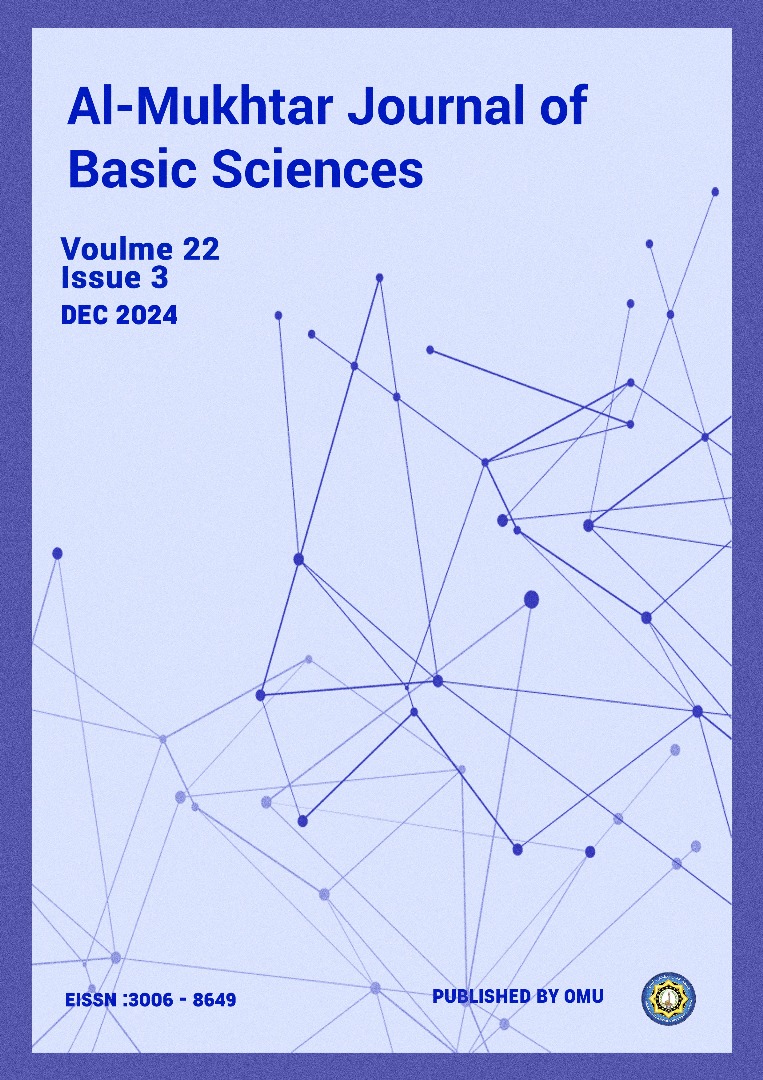Existence of Local Solutions for A Chemotaxis Navier Stokes System Modeling Cellular Swimming in Fluid Drops with Logistic Source
DOI:
https://doi.org/10.54172/dg3v6n81Keywords:
Chemotaxis system, Energy method, nonlinear diffusionAbstract
In this paper, we are concerned with the Cauchy problem for the three-dimensional chemotaxis system with an indirect signal production mechanism involving a diffusive partial differential equation. Which describes the motion of bacteria, Eukaryotes, in a fluid. Precisely, for the Chemotaxis-Navier–Stokes system modeling cellular swimming in fluid drops. We established the existence of local solutions to the compressible chemotaxis equation. We proved the local existence of the Cauchy problem (1.1)-(1.2) in with the small initial data by using the energy method.
References
Bellomo, N., Bellouquid, A., Tao, Y., & Winkler, M. (2015). Toward a mathematical theory of Keller–Segel models of pattern formation in biological tissues. Mathematical Models and Methods in Applied Sciences, 25(09), 1663-1763.
Chae, M., Kang, K., & Lee, J. (2012). Existence of smooth solutions to coupled chemotaxis-fluid equations. Discrete and Continuous Dynamical Systems, 33(6), 2271-2297.
Chae, M., Kang, K., & Lee, J. (2014). Global existence and temporal decay in Keller-Segel models coupled to fluid equations. Communications in Partial Differential Equations, 39(7), 1205-1235.
Cieślak, T., & Laurençot, P. (2010). Finite time blow-up for a one-dimensional quasilinear parabolic–parabolic chemotaxis system. Annales de l'Institut Henri Poincaré C, Analyse non linéaire,
Cieślak, T., & Stinner, C. (2012). Finite-time blowup and global-in-time unbounded solutions to a parabolic–parabolic quasilinear Keller–Segel system in higher dimensions. Journal of Differential Equations, 252(10), 5832-5851.
Cieślak, T., & Winkler, M. (2008). Finite-time blow-up in a quasilinear system of chemotaxis. Nonlinearity, 21(5), 1057.
Cieślak, T., & Winkler, M. (2017). Global bounded solutions in a two-dimensional quasilinear Keller–Segel system with exponentially decaying diffusivity and subcritical sensitivity. Nonlinear Analysis: Real World Applications, 35, 1-19.
Di Francesco, M., Lorz, A., & Markowich, P. (2010). Chemotaxis-fluid coupled model for swimming bacteria with nonlinear diffusion: global existence and asymptotic behavior. Discrete and Continuous Dynamical Systems, 28(4), 1437-1453.
Dombrowski, C., Cisneros, L., Chatkaew, S., Goldstein, R. E., & Kessler, J. O. (2004). Self-concentration and large-scale coherence in bacterial dynamics. Physical review letters, 93(9), 098103.
Fujie, K., & Senba, T. (2017). Application of an Adams type inequality to a two-chemical substances chemotaxis system. Journal of Differential Equations, 263(1), 88-148.
Hattori, H., & Lagha, A. (2021a). Existence of global solutions to chemotaxis fluid system with logistic source. Electronic Journal of Qualitative Theory of Differential Equations, 2021(53), 1-27.
Hattori, H., & Lagha, A. (2021b). Global existence and decay rates of the solutions for a chemotaxis system with Lotka-Volterra type model for chemoattractant and repellent. Discrete & Continuous Dynamical Systems: Series A, 41(11).
Hillen, T., & Painter, K. J. (2009). A user’s guide to PDE models for chemotaxis. Journal of mathematical biology, 58(1), 183-217.
Horstmann, D., & Winkler, M. (2005). Boundedness vs. blow-up in a chemotaxis system. Journal of Differential Equations, 215(1), 52-107.
Hou, Q., & Wang, Z. (2019). Convergence of boundary layers for the Keller–Segel system with singular sensitivity in the half-plane. Journal de Mathématiques Pures et Appliquées, 130, 251-287.
Keller, E. F., & Segel, L. A. (1970). Initiation of slime mold aggregation viewed as an instability. Journal of theoretical biology, 26(3), 399-415.
Li, X. (2019). On a fully parabolic chemotaxis system with nonlinear signal secretion. Nonlinear Analysis: Real World Applications, 49, 24-44.
Lorz, A. (2010). Coupled chemotaxis fluid model. Mathematical Models and Methods in Applied Sciences, 20(06), 987-1004.
Pan, X., & Wang, L. (2021). Improvement of conditions for boundedness in a fully parabolic chemotaxis system with nonlinear signal production. Comptes Rendus. Mathématique, 359(2), 161-168.
Rosen, G. (1978). Steady-state distribution of bacteria chemotactic toward oxygen. Bulletin of Mathematical Biology, 40, 671-674.
Shi, S., Liu, Z., & Jin, H.-Y. (2017). Boundedness and Large Time Behavior of an Attraction-Repulsion Chemotaxis Model With Logistic Source. Kinetic & Related Models, 10(3).
Tao, Y., & Winkler, M. (2012). Boundedness in a quasilinear parabolic–parabolic Keller–Segel system with subcritical sensitivity. Journal of Differential Equations, 252(1), 692-715.
Tuval, I., Cisneros, L., Dombrowski, C., Wolgemuth, C. W., Kessler, J. O., & Goldstein, R. E. (2005). Bacterial swimming and oxygen transport near contact lines. Proceedings of the National Academy of Sciences, 102(7), 2277-2282.
Wang, Y., Winkler, M., & Xiang, Z. (2018). The small-convection limit in a two-dimensional chemotaxis-Navier–Stokes system. Mathematische Zeitschrift, 289, 71-108.
Winkler, M. (2012). Global large-data solutions in a chemotaxis-(Navier–) Stokes system modeling cellular swimming in fluid drops. Communications in Partial Differential Equations, 37(2), 319-351.
Winkler, M. (2014). Stabilization in a two-dimensional chemotaxis-Navier–Stokes system. Archive for Rational Mechanics and Analysis, 211, 455-487.
Winkler, M. (2016). Global weak solutions in a three-dimensional chemotaxis–Navier–Stokes system. Annales de l'Institut Henri Poincaré C, Analyse non linéaire,
Winkler, M. (2017a). Global existence and slow grow-up in a quasilinear Keller–Segel system with exponentially decaying diffusivity. Nonlinearity, 30(2), 735.
Winkler, M. (2017b). How far do chemotaxis-driven forces influence regularity in the Navier-Stokes system? Transactions of the American Mathematical Society, 369(5), 3067-3125.
Zhang, Q., & Li, Y. (2015). Convergence Rates of Solutions for a Two-Dimensional Chemotaxis-Navier-Stokes System. Discrete & Continuous Dynamical Systems-Series B, 20(8).
Downloads
Published
Issue
Section
License

This work is licensed under a Creative Commons Attribution-NonCommercial 4.0 International License.
Copyright of the articles Published by Al-Mukhtar Journal of Basic Sciences (MJBS) is retained by the author(s), who grant MJBS a license to publish the article. Authors also grant any third party the right to use the article freely as long as its integrity is maintained and its original authors and cite MJSc as the original publisher. Also, they accept the article remains published by the MJBS website (except in the occasion of a retraction of the article).












